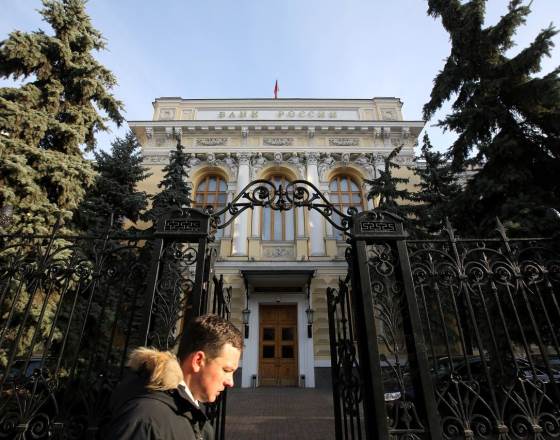
Pressure on ruble creates a headache for Moscow’s central bankers
Russia’s central bank won plaudits for stemming last December’s ruble crisis when it jacked up interest rates up by 6.5 percentage points to 17%. It has since unwound nearly all of that increase to ease pressures on Russia’s battered economy.
But the ruble is cause for concern once more.
The renewed decline in oil prices is to blame. Brent crude this week dipped back below $50 for the first time since January, and is now down 12% for the year. With the ruble and oil prices moving almost in lock step, the Russian currency has weakened to 62.8 against the U.S. dollar, a level last seen in March and down over 20% from its May peak.
On the bright side, the fall in the ruble acts as a shock-absorber for the Russian government, which would otherwise face a big budget hole due to the decline in oil prices. More worryingly, though, the currency reacted badly to last week’s rate cut by the Bank of Russia, falling sharply. The central bank has already had to abandon purchases of foreign exchange in an effort to restock its reserves with inflation north of 15% and a deepening recession on its hands, it now has even less room for maneuver.
Faced with a weakening ruble—and if the selloff gains pace the way it did in December—the central bank may yet be forced to raise rates into the teeth of an oncoming recession; in last week’s statement it dropped a reference to being ready to continue cutting rates.
Of course, this just highlights the vulnerable, oil-dependent nature of the Russian economy, further exacerbated by its isolation from global financial markets. The country has managed remarkably to withstand a virtual stop in foreign financing due to sanctions linked to the conflict in Ukraine. But it still has many fundamental problems.
The International Monetary Fund this week highlighted the decline in Russian growth versus precrisis trends—by over four percentage points—and listed a familiar litany of issues: stalled reform, weak investment, declining productivity and poor demographics.
In the light of that, the Central Bank of Russia has so far done a good job in balancing the demands made of it. But if oil continues falling—a clear risk given concerns about both oversupply and weak demand—then so will the ruble, and policy makers will have some tough choices on their hands.
original source: http://www.wsj.com/articles/russian-rubles-red-flag-flies-again-1438769373
